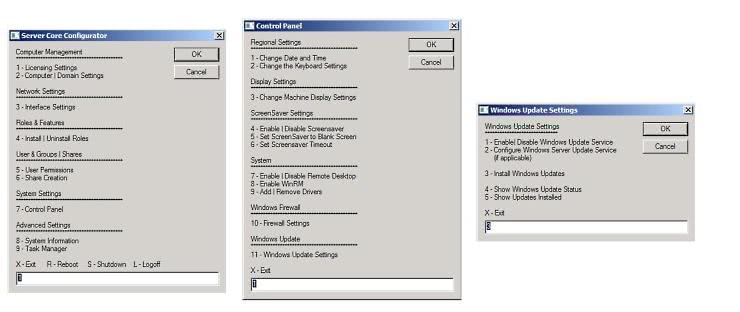Windows 2008 Server Core Configurator

Windows Server 2008 is the latest product of Microsoft's Server series which provides new features compared to previous Windows Server versions like Hyper-V, a hypervisor-based virtualization system, self-healing NTFS or Server Core.
Server Core is a bare bones installation of Windows Server 2008 without Windows Explorer which means that configuration is done through a command line interface or by remotely connecting to the Windows 2008 Server.
Server Cores can be configured for several basic rules like DNS Server, DHPC Server or Hyper-V virtual server. The Windows 2008 Server Core Configurator aids the system administrator in configuring certain tasks like activating the system, adding or removing drivers, setting user and group permissions or configuring networking features.
The Core Configurator comes as a cab file which has to be unpacked before the configurator can be run. To expand the cab archive run the following command:
expand CoreConfigurator.cab -f:*
The Windows 2008 Server Core Configurator can be run by executing Setup-Core.wsf afterwards.
Update: Windows Server 2008 R2 has been released along with the Windows client based operating system upgrade Windows 7. The developers have released Core Configurator 2.0 for Windows Server 2008 R2 as a consequence which is fully stable with the latest Microsoft server operating system.
The file is provided as an ISO image and zip file. System administrators who want to run the program on a virtual machine need to download the ISO image, while those running it on a physical host are asked to select the zip version of the program instead. Here is an updated task list of what the program has to offer:
- Product Licensing
- Networking Features
- DCPromo Tool
- ISCSI Settings
- Server Roles and Features
- User and Group Permissions
- Share Creation and Deletion
- Dynamic Firewall settings
- Display | Screensaver Settings
- Add & Remove Drivers
- Proxy settings
- Windows Updates (Including WSUS)
- Multipath I/O
- Hyper-V including virtual machine thumbnails
- JoinDomain and Computer rename
- Add/remove programs
- Services
- WinRM
- Complete logging of all commands executed
You find additional information about the program and its functionality on the project website over at Codeplex.
Advertisement














